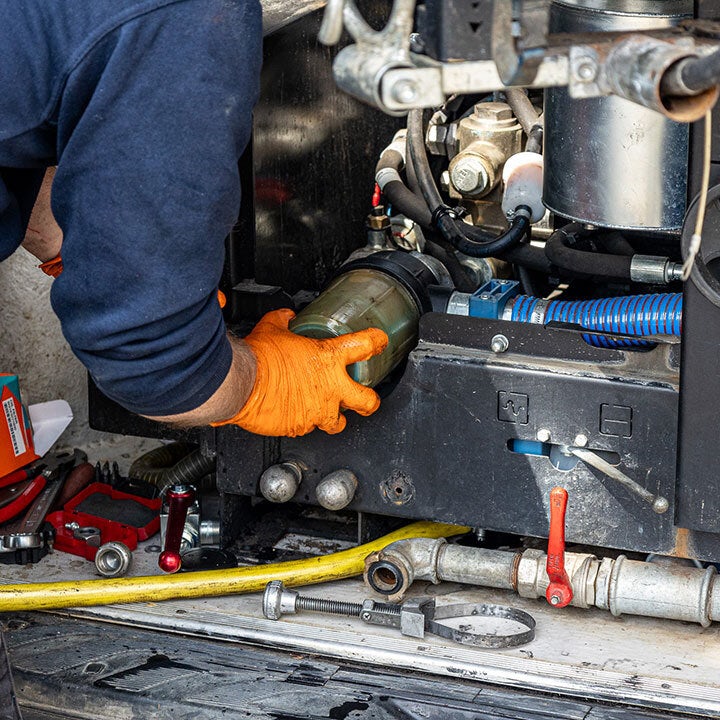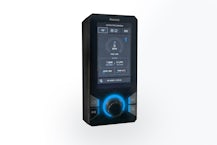- Guides
Drain Jetting Equipment: A Winter Checklist

Preparing a drain jetting or jetvac machine for the winter months is essential to ensure it operates efficiently and avoids damage due to freezing temperatures. Here's a checklist to help you get ready:
Prevent Equipment Freezing
Utilise Antifreeze: When operating in freezing conditions, it's advisable to circulate antifreeze through the system at the end of each day's use. All Rioned machines come equipped with antifreeze valves. You can find a user-friendly tutorial video below demonstrating the antifreeze procedure, which is applicable to all Rioned machines. While many other brands on the market include antifreeze valves, we recommend consulting your operator's manual before initiating this process.
Drain and Empty Water: We would strongly recommend undertaking the anti-freeze process after using your jetter. If you are unable to do this, it is essential to drain all water from the water tank, hoses, and nozzles to prevent freezing and potential damage. Use the drain valves to release any trapped water.
Clean and Maintain: Thoroughly clean the jetting machine, removing any dirt, debris, or residue. This will prevent clogs and corrosion during the winter.

Maintenance Procedures
Lubricate Components: Apply a lubricant to moving parts, such as pump pistons and valves, to prevent freezing and rust. Use a lubricant suitable for cold weather conditions.
Check Hoses and Nozzles: Inspect hoses and nozzles for cracks, leaks, or other damage. Replace any damaged components to ensure efficient operation.
Battery Maintenance: Check the battery and ensure it is fully charged. Cold conditions can reduce the ability of the electrolyte solution in the battery to transfer full power and this is particularly true for older batteries, so keep it well charged for reliable starting.
Inspect Filters: Check and clean or replace any fuel, air, or hydraulic filters to ensure optimal performance.
Winterise the Pump: The anti-freeze guide described above is the best way to prevent damage to the pump from freezing. It may also be worth referring to the pump manufacturer’s guidelines for advice on preventative measures.
Fuel and Oil: Ensure the machine's fuel and oil levels are adequate for winter use. Use winter-grade oil and consider using antifreeze additives in the fuel system to prevent freezing.
Test the Machine: Before the cold weather sets in, run the machine to ensure it's in good working condition and make any necessary repairs or adjustments.
For more information on the range of Service and Repair options availableStoring and Transporting Equipment
Store Indoors: If possible, store the drain jetting machine indoors, in a climate-controlled environment, to protect it from extremely cold temperatures. If your machine is going to be out of action for more than a few days during winter, it’s important to ensure that you drain the fuel and oil tanks and add new fuels before starting the jetter again.
Storing outdoors: Use a night heater in your jetting van to keep the median temperature above zero during the night. You can also Insulate the water tank or cover it with an insulating blanket to help maintain a stable temperature and prevent freezing. You can also cover the machine with a waterproof, breathable tarp or an all-weather cover to protect it from snow and ice.
Safety First
Safety Precautions: Ensure that any electrical components are protected against freezing and moisture, and use extension cords that are rated for outdoor and winter use.
Emergency Kit: Keep an emergency kit on hand with spare parts, tools, and materials you may need to perform on-the-spot repairs during winter operations.
Operator Training: Ensure that the machine operator is trained on winter-specific precautions and procedures, including recognising signs of frostbite and hypothermia.
For more information on Jetting Equipment Safety
By following this checklist, you can help ensure that your drain jetting machine is properly prepared for winter, preventing costly damage and ensuring it's ready for use when needed.
- Guides















